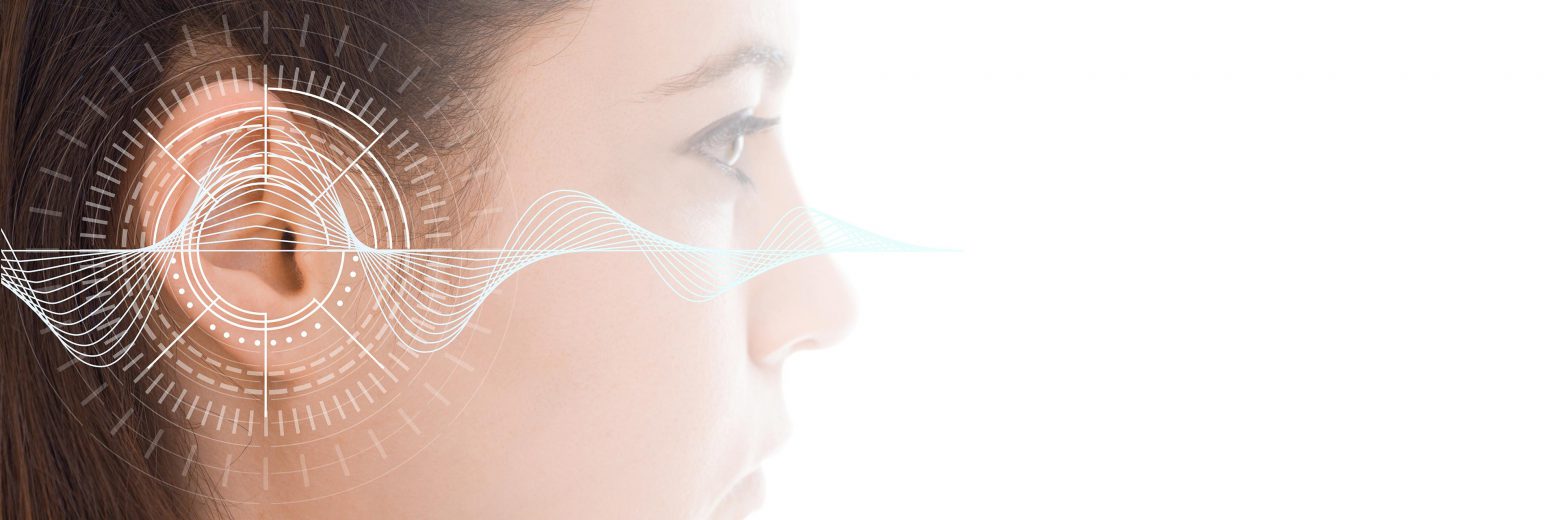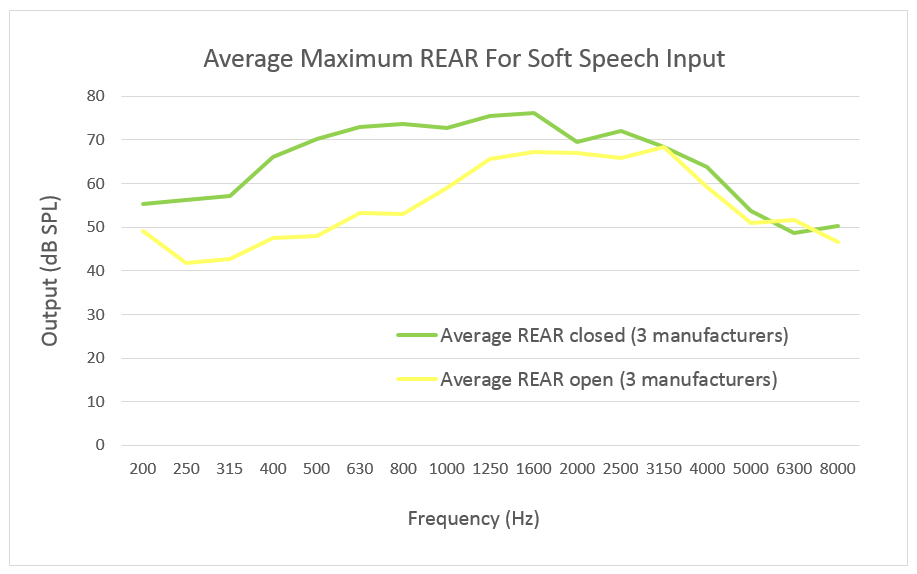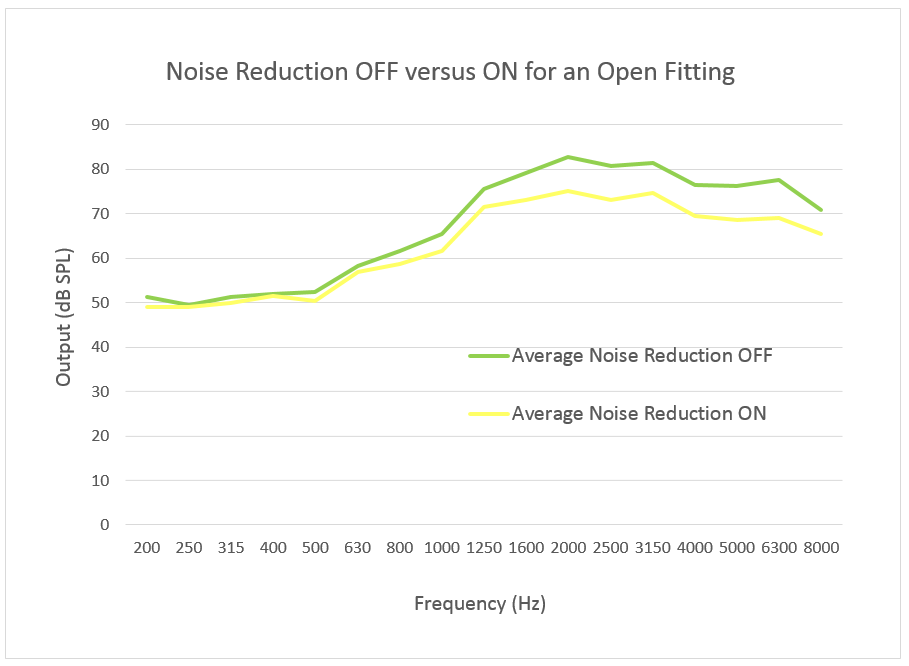The Trouble with Open
Rebecca Herbig AuD, Aaron Jacobs

When new users of hearing aids express dissatisfaction about the sound of their own voice, our first instinct is usually to make the fitting more open or turn down low frequency gain. But is this the best solution? We have been taught that the occlusion effect often is the culprit in own voice issues, so why is it that with the prevalence of open fittings, patient dissatisfaction with the sound of their own voice is still an obstacle to hearing aid acceptance?
This is because own voice complaints are actually caused by two separate phenomena. The usual suspect which gets the blame is the occlusion effect. This is the perception of increased loudness of one’s own voice when the sound energy transmitted to the ear via bone conduction cannot escape the ear canal because of a closed fitting (see Ricketts, Bentler, and Mueller, 2019, for a thorough review of the occlusion effect). Unfortunately, by opening the fitting to allow low-frequency components of the own-voice to escape, amplified sound also escapes rather than being transmitted to the eardrum. Furthermore, this approach also allows ambient sounds (including background noise) to directly enter the ear canal.
The less commonly cited reason for own voice complaints is hearing aid amplification. This is the reason why even when the fitting is already acoustically open, patients still report that their voice sounds unnatural or distracting. In such instances, hearing care professionals have had no alternative other than turning down effective gain, which has the side effect of less gain for understanding speech, as well as reducing the awareness of important environmental sounds.
The negative effect of turning down gain is comparatively easy to envision, but perhaps what’s less apparent is the other unwanted effects of fittings that are too open. By increasing the vent size, or by switching from a closed or double dome to an open dome, we may alleviate the occlusion effect. But at what cost?
By using an acoustically open fitting, some of the amplified sound leaks out of the ear canal instead of arriving at the eardrum. This is referred to as the “vent out” effect. This loss of sound energy is the reason why it is often not possible to achieve the necessary gain for certain hearing losses when applying an open fitting.
The following figure is an illustration of this effect. The two curves show the maximum REAR for a soft-speech signal, averaged for three current model hearing aids from three leading manufacturers. All programming being the same, what is illustrated is the effect of a fitting that was open vs closed[1].
As can be seen, there is as much as 20 dB difference in the low to mid frequencies between the open and closed fittings. While most of the loss occurs with low frequencies, a difference can also be seen in the important mid-to-high frequencies between 1000Hz and 2500 Hz. According to the prediction of Speech Intelligibility Index (SII), reduced audibility in the mid-frequency bands will significantly impact speech intelligibility (Ricketts, Bentler, & Mueller, 2019).
[1] Probe microphone measurements (real ear aided response; REAR) were obtained using an acoustically-open and a closed custom earmold. Three BTE hearing aids (from three major manufacturers) were tested. NAL-NL2 (experienced) was selected with a 0 dB HL audiogram as the starting point, and the manufacturer’s First Fit was performed. For all hearing aids, the manufacturer’s feedback cancellation algorithm was activated, and initialization was performed. The overall gain of each instrument was progressively increased at all frequencies until either the hearing aid produced audible feedback, or the measured REAR would not increase further. Using the ISTS stimulus at a 50-dB-SPL input, the REAR was then measured for each of the three products using both a closed and an open custom earmold. The measured REARs were averaged across the three manufacturers for both earmold conditions.

Listening in noisy situations is one of the most common complaints of those with hearing loss (Abrams, 2015). In answer, hearing aids use ever more advanced signal processing techniques to reduce noise and improve speech intelligibility. The latest directional microphone system in Signia hearing aids has repeatedly shown to offer better speech intelligibility in challenging noisy situations than even those with normal hearing (Littmann & Høydal, 2017, Littmann, Froehlich, & Powers, 2017, Meija, et. al., 2017). However, all these studies were conducted exclusively with closed fittings.
The reason for this is that open fittings not only allow processed and amplified sound to flow out of the ear, they also allow unwanted noise in. Sounds subject to vent-in effects are typically low frequency. This kind of noise, as we know, can be detrimental to speech intelligibility due to a reduction in the signal to noise ratio and other effects such as upward spread of masking. Because these sounds enter the ear canal directly, bypassing the hearing aid, even the best signal processing schemes provide only partial benefit for open fittings (Ricketts, 2000, Kaiser, et. al., 2007, Magnusson, et. al., 2013).
For example, the figure below compares the average hearing aid output for an open fitting when noise reduction was turned on and off for three hearing aids from three separate manufacturers[2]. As can be seen, no more than 8 dB of gain reduction can be observed in the mid to high frequencies. And more importantly, for the frequency region where background noise is the most intrusive, 1000 Hz and below, the effects of noise reduction are negligible. As reviewed by Mueller, Ricketts and Bentler (2017), real-ear directional processing with open fittings will be impacted in a very similar manner. That is, there will be minimal directionality for the frequencies of 1500 Hz and below.
[2] Three BTE hearing aids (from three major manufacturers) were tested. NAL-NL2 (experienced) was selected with a 0 dB HL audiogram, and the manufacturer’s First Fit was performed. For all hearing aids, the overall gain was then manually adjusted to approximately 50% level for all channels. Using a 75-dB-SPL white noise stimulus, probe microphone measurements (REAR) were obtained for an acoustically open custom earmold. The REAR was assessed with the noise reduction set to both max and off for each instrument. The average REAR was calculated for the three Noise Reduction max measurements, and the three Noise Reduction off measurements.

Determining the appropriate “openness” of a fitting is a delicate balancing act between the perception of the wearer’s own voice on one hand, and appropriate gain, effective digital signal processing, and feedback stability on the other. All these factors are paramount to the wearer’s initial acceptance as well as the overall success of a fitting. Hickson and colleagues (2014) showed that a close match to prescriptive targets was the only audiological variable associated with successful hearing aid outcomes. As clinicians, if we can tip the balance so that the wearer’s own voice is no longer an issue, we have a better chance of providing the amplification required by the wearer, and allowing advanced hearing aids features such as directionality and digital noise reduction to provide more benefit.
By recognizing and optimizing the wearer’s own voice completely independently from all other sounds in the environment, Signia Own Voice Processing (OVP) has been clinically proven to improve the acceptance of own voice for 80% of dissatisfied wearers (Powers, et. al., 2018). For a thorough description of this technology, see Høydal (2018).
While OVP does not solve own-voice problems due to the occlusion effect, it addresses own-voice issues caused by amplification. With the popularity of open fittings, the occlusion effect is often not the root cause of own voice issues. Therefore, OVP can greatly improve the wearer’s perception of their own-voice without needing to make the fitting even more open or reducing gain. By activating OVP, hearing care professionals can prescribe more closed fittings that can improve both audibility and speech intelligibility.
Because OVP addresses own voice issues caused by amplification, it is appropriate for both open and closed fittings. In fact, studies show that with OVP active, many patients who previously considered their own voice as only “acceptable” now are “very satisfied.” (Powers, et. al., 2018, Froehlich, et. al., 2018). The positive effects of OVP have also been found regardless of the fitting rationale. Therefore, hearing care professionals should confidently apply OVP for all their patients to improve initial acceptance and longterm satisfaction.
Abrams, H. (2015, September). MarkeTrack 9 (MT9): A New Baseline. Presented at the American Academy of Audiology Practice Management Specialty Meeting. Baltimore, MD.
Froehlich, M., Powers, T., Branda, E., & Weber, J. (2018) Perception of Own Voice Wearing Hearing Aids: Why “Natural” is the New Normal. AudiologyOnline. Retrieved from www.audiologyonline.com
Hickson, L., Meyer, C., Lovelock, K., Lampert, M., & Khan, A. (2014). Factors associated with success with hearing aids in older adults. International Journal of Audiology,53 sup1, 18-27.
Høydal, E. (2017). A new own voice processing system for optimizing communication. Hearing Review,24(11), 20-22.
Keidser, G., Carter, L., Chalupper, J., & Dillon H. (2007). Effect of low-frequency gain and venting effects on the benefit derived from directionality and noise reduction in hearing aids. International Journal of Audiology, 46(10), 554-68.
Littmann, V., Froehlich, M., & Powers, T. (2017). Multi-center evidence of reduced listening effort using new hearing aid technology. The Hearing Review, 24(2), 32-34.
Littmann, V. & Høydal, E. (26. May 2017). Comparison study of speech recognition using binaural beamforming narrow directionality. The Hearing Review. Retrieved from www.hearingreview.com
Magnusson, L., Claesson, A., Persson, M., & Tengstrand, T. (2013). Speech recognition in noise using bilateral open-fit hearing aids: the limited benefit of directional microphones and noise reduction.International Journal of Audiology, 52(1), 29-36.
Mejia, J., Carter, L., Dillon, H., & Littmann, V. (2017). Listening Effort, Speech Intelligibility, and Narrow Directionality. Hearing Review, 24(1), 22.
Mueller H, Ricketts T, & Bentler R. (2017). Speech mapping and probe microphone measurements. San Diego: Plural.
Powers, T., Froehlich, M., Branda, E., & Weber, J. (2018). Clinical study shows significant benefit of own voice processing. Hearing Review, 25(2), 30-34.
Ricketts, T. (2000). Directivity quantification in hearing aids: Fitting and measurement effects. Ear & Hearing, 21, 45–58.
Ricketts, T., Bentler, R. & Mueller G. (2019). Essentials of Modern Hearing Aids Selection, Fitting, and Verification. San Diego: Plural.

Rebecca Herbig, Au.D., is a Clinical Education Specialist for Sivantos USA. Since 2008, Dr. Herbig has been responsible for various aspects of scientific marketing, both globally and specific to the US market. Prior to joining Sivantos, she worked as a clinical audiologist in northern Virginia. Rebecca received her doctorate in Audiology from Gallaudet University in Washington DC.

Aaron Jacobs worked as a clinical audiologist in Australia before starting at Sivantos Pty. Ltd. (formerly Siemens Hearing Instruments) as a product trainer. In 2010, Aaron relocated to Sivantos GmbH in Germany (formerly Siemens Audiologische Technik) where he was employed as a Software Product Manager. Since 2016, Aaron has worked in the Corporate Audiology department. Aaron holds a Bachelor of Mechanical Engineering (Honours) from RMIT University and a Master of Clinical Audiology from the University of Melbourne.